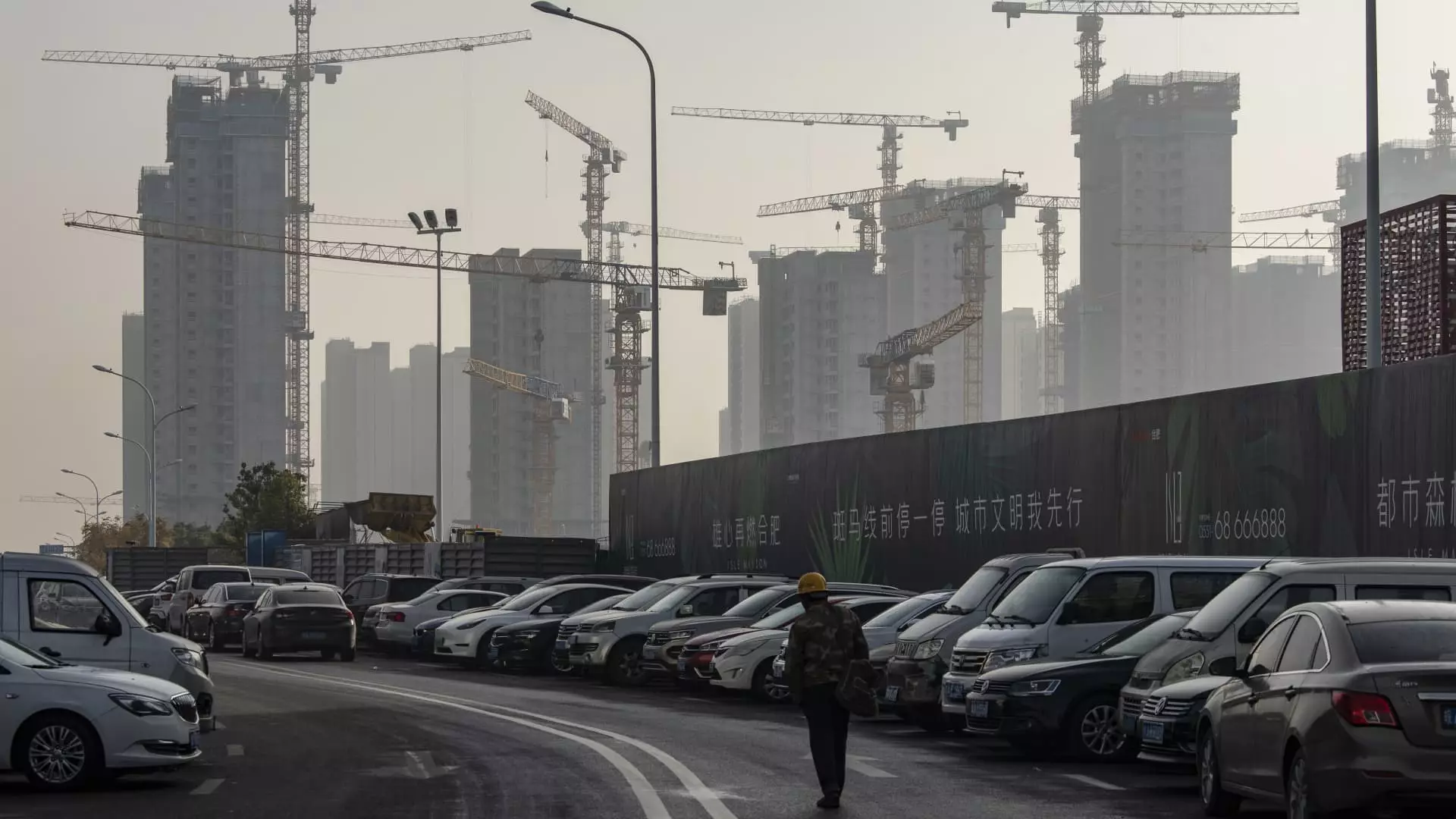The prognosis for China’s real estate market continues to be bleak, with industry experts predicting that a recovery is not likely until late 2025 at the earliest. Recent analyses from prominent research firms, including Goldman Sachs, S&P Global Ratings, and Morgan Stanley, have collectively identified a trend of ongoing decline in property prices and sales, despite a series of stimulus measures initiated by the Chinese government. The government’s endeavor to stabilize the real estate sector comes amid broader economic objectives, particularly a shift toward advanced manufacturing as a primary driver of growth. This juxtaposition raises questions about the sustainability and priority of support for the beleaguered housing market.
Goldman Sachs highlights an “inflection point” in its recent analysis, stating that although current measures signal a potential halt to the downward trend, they do not guarantee an immediate return to prosperity. Their report suggests that property prices may stabilize only by late 2025, with a slight upswing expected by 2027. Meanwhile, both S&P and Morgan Stanley echo this sentiment, forecasting the bottoming of the market during the same timeframe, contingent upon consistent government support aimed at developer financing and inventory reduction.
The Chinese government has been proactive, announcing fiscal measures to remedy the research firm’s grim expectations. Yet, there is skepticism about the scale and effectiveness of these interventions. Goldman Sachs predicts that an additional €8 trillion ($1.12 trillion) in fiscal spending will be necessary to address liquidity crises among developers and to efficiently manage the considerable inventory of unsold homes. Without such measures, Goldman warns of an extended downturn that could persist for another three years, underscoring the susceptibility of the property sector to economic fluctuations and policy implementations.
Furthermore, the systemic reliance of the real estate sector on debt financing presents a considerable challenge. Developers, burdened by significant debt, have failed to deliver pre-sold units, which has dampened consumer sentiment and confidence in the market. The notion that 20 million homes remain unfinished serves as a stark reminder of the precarious situation. With an emphasis on long-term recovery measures rather than temporary fixes, Beijing’s focus on manufacturing could slow down the recovery trajectory for real estate, an industry that historically accounted for a noteworthy portion of the country’s GDP.
Despite ongoing challenges, there are scant signs of improvement. Statistics show that property sales in key cities have experienced a notable decline—around 4% year-over-year in October—compared to a staggering 25% in September. While any reduction in the contraction is a positive development, it hardly equates to a market recovery. The prospect of declining sales in the coming years—predicted to drop to around 9 trillion yuan this year and potentially 8 trillion yuan in 2025—paints a dismal picture that can only worsen if significant structural changes do not take place.
The market dynamics also reveal that price-cutting strategies employed by developers are a short-term solution, failing to address the underlying issues of rising unsold inventory. In September, leading developers reported a 37.7% drop in property sales compared to the previous year, marking the worst performance since earlier in 2023. The resultant drop in property sales is emblematic of a pervasive lack of confidence within the market, pushing developers to adopt a more cautious approach towards land acquisitions and project initiations, resulting in a sharp decline in the number of new construction projects.
Future Outlook and Considerations
Looking toward the future, analysts maintain a cautious outlook regarding the impact of government measures. Goldman Sachs notes that the current scale of support has been insufficient, warning that without robust interventions, property prices could plummet by an additional 20% to 25%. The emphasis on short-term stabilization measures as opposed to comprehensive reforms could perpetuate the sector’s struggles.
The People’s Bank of China has introduced specific programs designed to convert unsold completed homes into affordable housing. While initiatives like these are steps in the right direction, they have thus far addressed only a minor fraction of the total housing stock. The effects of such policies appear limited given the magnitude of the housing crisis.
While there are glimmers of hope within China’s real estate sector, the overarching message remains clear: sustained governmental support and structural reforms are imperative for any meaningful recovery. The challenges facing the sector are multifaceted, and until these issues are tackled judiciously, the real estate landscape in China is likely to remain fraught with uncertainty.

